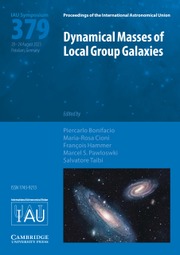Article contents
Identification of a Local Sample of Gamma-Ray Bursts Consistent with a Magnetar Giant Flare Origin
Published online by Cambridge University Press: 27 February 2023
Abstract
Triggered by the MGF detected from the Sculptor galaxy on April 2020, the study described in this proceeding reports the unambiguous identification of a distinct population of 4 local (< 5 Mpc) short GRBs, whose rise time and isotropic energy release are independently inconsistent with the larger short GRB population at >99.9% confidence. These properties, the host galaxies, and non-detection in gravitational waves all point to an extragalactic MGF origin. The inferred volumetric rates for events above 4 × 1044 erg of  $$R{\rm{ = }}3.8_{ - 3.1}^{ + 4.0} \times {10^5}Gp{c^{ - 3}}y{r^{ - 1}}$$. These rates imply that some magnetars produce multiple MGFs, providing a source of repeating GRBs. The rates and host galaxies favor common core-collapse supernova as key progenitors of magnetars.
$$R{\rm{ = }}3.8_{ - 3.1}^{ + 4.0} \times {10^5}Gp{c^{ - 3}}y{r^{ - 1}}$$. These rates imply that some magnetars produce multiple MGFs, providing a source of repeating GRBs. The rates and host galaxies favor common core-collapse supernova as key progenitors of magnetars.
- Type
- Contributed Paper
- Information
- Copyright
- © The Author(s), 2023. Published by Cambridge University Press on behalf of International Astronomical Union
References
- 2
- Cited by


